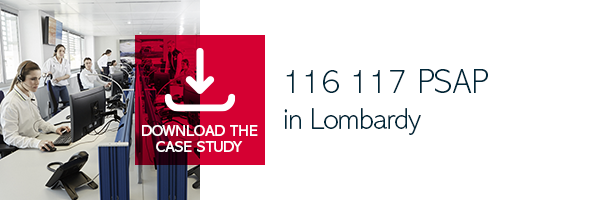Telemedicine has become an increasingly important reality in the lives of many people, especially as a result of the COVID-19 pandemic. This innovative healthcare modality has proven to be a key option to ensure continuity and quality of care at a time when the need to limit the spread of the virus has made traditional face-to-face interaction between patients and doctors difficult.
Along with many challenges and opportunities, with the advent of telemedicine a new priority has arisen: rethinking traditional medicine and, consequently, the organisation of the entire National Health Care System.
What is telemedicine?
Telemedicine, considered as the digital evolution of traditional medicine, originates from the marriage of medicine and telematics and is a constantly evolving discipline. Its aim is to improve interaction and communication between doctor and patient, facilitating the delivery of healthcare services at a distance: from diagnosis to therapy, everything is manageable through innovative tools, procedures and technologies without the need to meet physically.
The vision behind telemedicine consists in using new technologies to support health, bringing about a change in the way people's health care needs are met.
In this sense, telemedicine does not replace traditional healthcare provision, but uses new technologies to innovate the relationship between doctors and their patients, improving their effectiveness.
The aims of Telemedicine
Telemedicine enables 5 health purposes to be achieved:
-
Secondary prevention. Telemedicine allows constant monitoring of vital parameters (e.g. blood glucose levels for diabetic patients) in order to reduce the risk of complications in people at risk or suffering from chronic diseases.
-
Diagnosis. Telemedicine tools can be used to simplify and speed up the traditional diagnosis process by facilitating the sharing of patient information between doctors and healthcare professionals.
-
Treatment. Telemedicine helps doctors make therapeutic choices and evaluate the progress of the care provided.
-
Rehabilitation. Thanks to telemedicine, it is possible to provide rehabilitation interventions at the fragile patient's home (disabled, children, elderly, chronically ill).
-
Monitoring. The exchange of data (heart rate, oxygen saturation, cardiac electrical activity, blood pressure, body weight, glycaemia, respiratory activity) from the monitored subject to the doctor is facilitated. For this activity, telemedicine makes use of wearable devices or smartphones that can be used by the patient or caregiver.

The potential of telemedicine
The main benefits we should expect from the adoption of telemedicine techniques and tools are:
-
Equity of access to healthcare. This is greatly increased by telemedicine, especially in territories that are more difficult to reach by the traditional healthcare system. Think of small islands or rural and mountain areas, poorly connected to the cities.
-
Continuity of care. Telemedicine greatly improves the quality of care by bringing the doctor's service directly to the patient's home. In particular, the telemonitoring service is designed to improve the quality of life of patients suffering from chronic diseases, encouraging their de-hospitalisation.
-
Containment of healthcare expenditure. The importance of telemedicine is also expressed through a potential containment of healthcare expenditure. If used correctly, telemedicine services can lead to innovation in the health sector and in its operational management models. In this respect, telemedicine contributes to the reduction of hospitalisations for the chronically ill or admissions to nursing homes and homes for the elderly.
-
Operational efficiency. The digital technologies supporting telemedicine promote more efficient management of the healthcare system. Thanks to them, communication between the different actors is continuous, resource management is optimised, waiting times are reduced and patient information is shared in a timely manner. All this translates into continuous and increasingly patient-centric care on the ground.
Ultimately, telemedicine represents the new face of traditional medicine, a decisive step towards a future that will see increasingly accessible, affordable and technologically advanced care and assistance.

